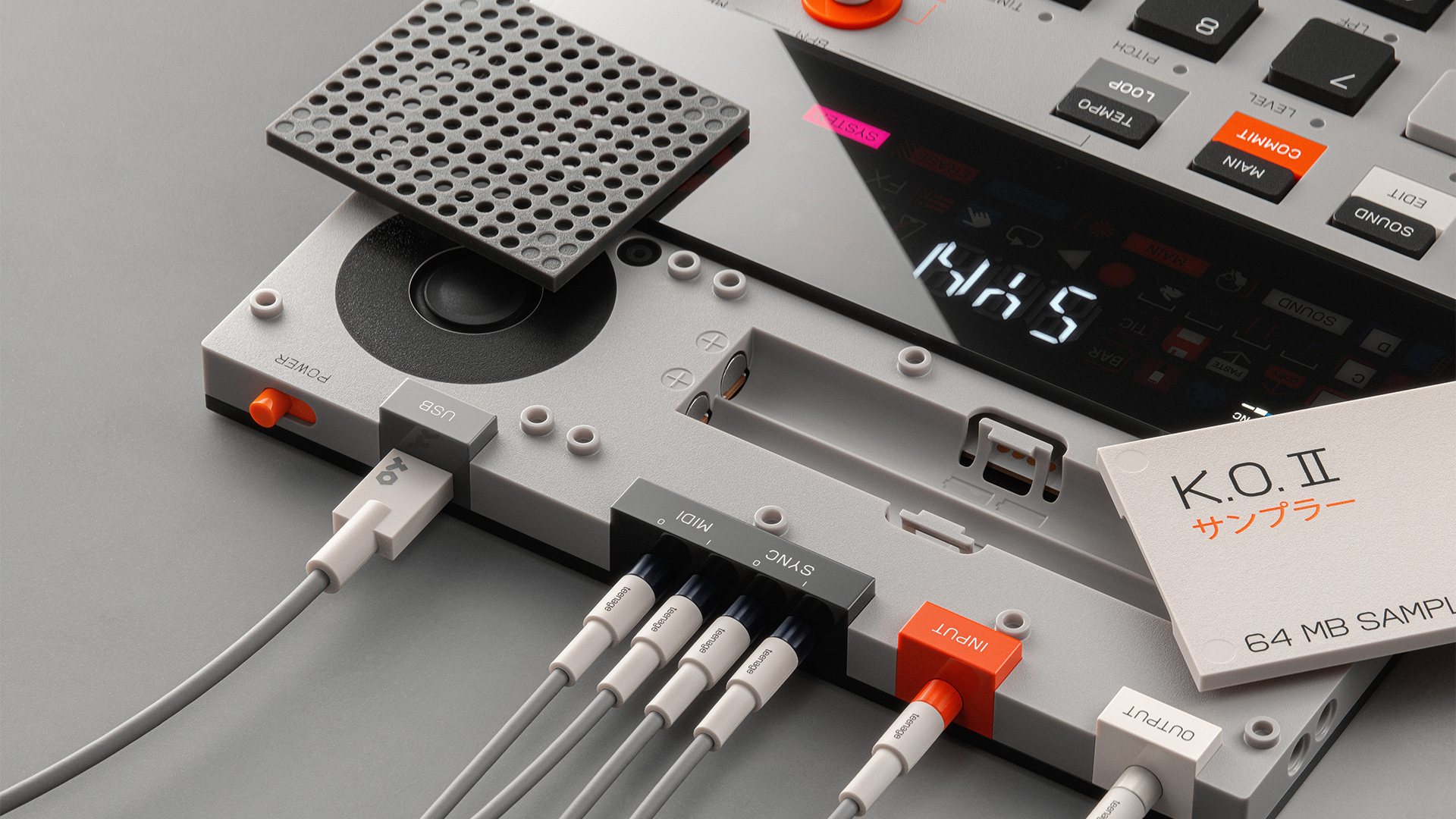Teenage Engineering’s knockout portable sampler is my next musical obsession
Swedish tech hipsters reveal bigger brother to the Pocket Operator series

It is very difficult to pigeonhole design and tech company Teenage Engineering. One minute it is making a choir of wooden dolls, created to serenade the listener with a repertoire of choral classics, and on the other it is working with Ikea to produce stylish, multi-use LED lighting and cute Bluetooth speakers.
Hailing from Sweden but often using kanji as its alphabet of choice, the slightly madcap but infinitely lovable company has just taken the wraps off its latest portable sampler, sequencer and composer in the form of the EP–133 K.O. II. And it looks very much like my next musical impulse buy to follow up the company's OB-4 radio, which is one of my favorite possessions.
Packing a built-in microphone and speaker, 64MB internal memory, 999 sample slots and inputs for MIDI and USB, the compact and achingly cool device sits somewhere between an amateur beat-maker’s plaything and a fully-fledged sampler and sequencer that’s capable of creating the next big trip-hop track.

Speaking to The Verge, David Eriksson, Teenage Engineering's co-founder and hardware lead, says the device is the "kind of thing that you should make music and finish your songs" on, offering a level of simplicity that follows along the same lines as the excellent Pocket Operator.
That said, the K.O. II is also a massively capable music-making machine, allowing you to hook up a MIDI keyboard, turntable or basically anything with a 3.5mm jack to begin sampling sounds. Alternatively, you can use your voice or record an acoustic instrument through the built-in microphone, or take advantage of the hundreds of pre-loaded drum beats, bass notes and sample sounds.
Alternatively, you can erase the entire hard drive and there are 999 sample slots to assign beats, bleeps and notes to, with the entire recording process committed to four distinct timelines or layers, labelled A to D.

Looking like a giant calculator from the 80s, the relatively diminutive device is powered by four AAA batteries, or via a USB-C cable for constant juice. Probably a good thing considering the addictiveness of the brand’s coveted "punch-in" effects.
Sign up for breaking news, reviews, opinion, top tech deals, and more.
A clear influence on this sampler’s name, the second-generation of FX allows wannabe producers to access a suite of 12 built-in programs that can instantly be applied to individual notes, samples or keys, as well as to entire groups.
This allows beat makers to play around with live effects that have the ability to turn any basic sequence of beats and notes into a looping, sweeping, ramping Aphex Twin-style track.
Self-confessed suckers for some analogue tactility, the team at Teenage Engineering has also bestowed the KO II with 12 pressure and velocity sensitive pads, while all knobs and dials are meticulously chosen for their old-school feel, but with modern performance.

Heck, the entire package comes in a limited edition 10-inch collector's box that's designed to look like a retro vinyl sleeve.
It costs $299 / £299 / AU$549, so it's not exactly cheap, but it's also surprisingly reasonable given the specs this thing offers and the fact that Teenage Engineering's fully-fledged OP-1 synthesizer costs $1,400 / £1,800 / AU$3,200.
Opinion: You had me at OB-4

I fell in love with Teenage Engineering when I was first introduced to its slightly nuts OB-4 "Magic Radio". Alongside the ludicrously good sound quality, coming from two four-inch bass drivers and a pair of neodymium tweeters, came the ability to rewind live radio thanks to the two-hour looping “digital tape” nestled inside.
The motorized user-interface is a delight to use and various functions on offer are pretty much pointless but all the better for it. You can create an ambient drone based on snippets of recent radio broadcasts (trippy), set a metronome (why?) or listen to a number of spiritual mantras on repeat to get you into a blissed-out zone (bizarre but actually quite nice).
The OB-4 can be obnoxiously loud, or crystal clear at lower, background volumes. Plus, the temptation to pitch-up, tweak, warp and scratch whatever might be pumping out of the 100 decibel system somehow justifies its ludicrous price tag.
Above all else, Teenage Engineering continuously proves that tech can be stylish, analogue, expertly designed and great fun. And the EP–133 K.O. II is likely the reason you’ll find me locked in a dark room for the next few months.
You might also like

Leon has been navigating a world where automotive and tech collide for almost 20 years, reporting on everything from in-car entertainment to robotised manufacturing plants. Currently, EVs are the focus of his attentions, but give it a few years and it will be electric vertical take-off and landing craft. Outside of work hours, he can be found tinkering with distinctly analogue motorcycles, because electric motors are no replacement for an old Honda inline four.